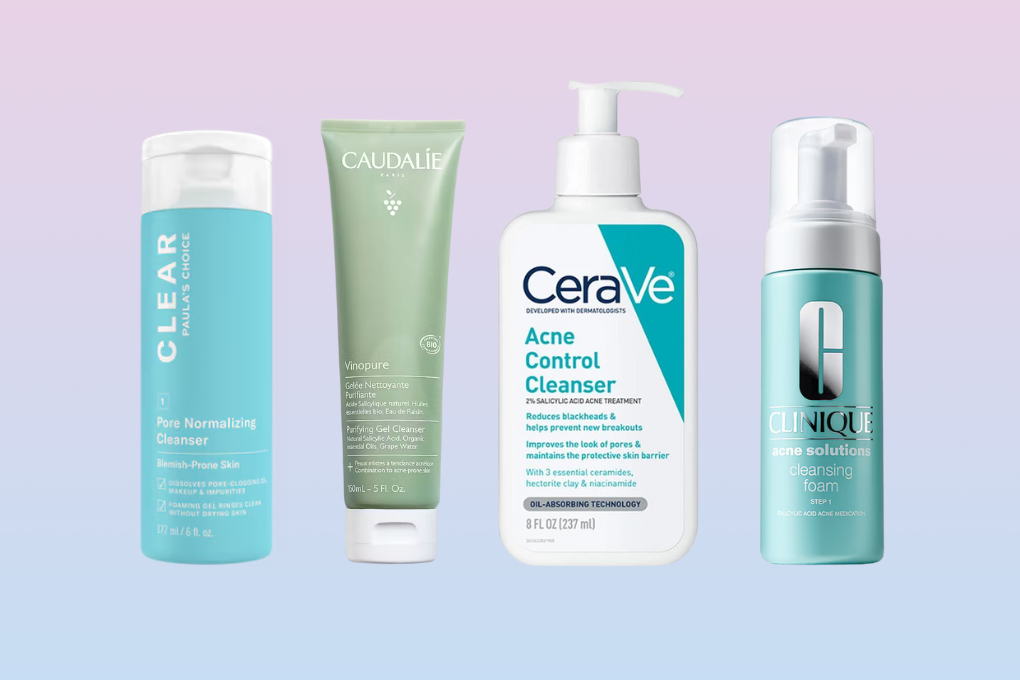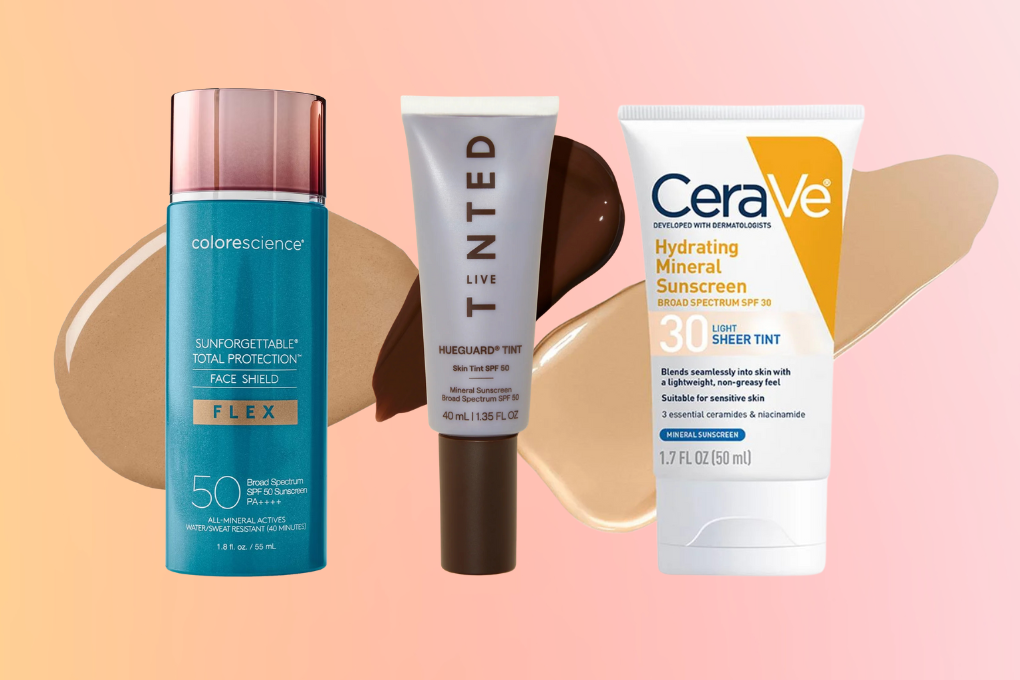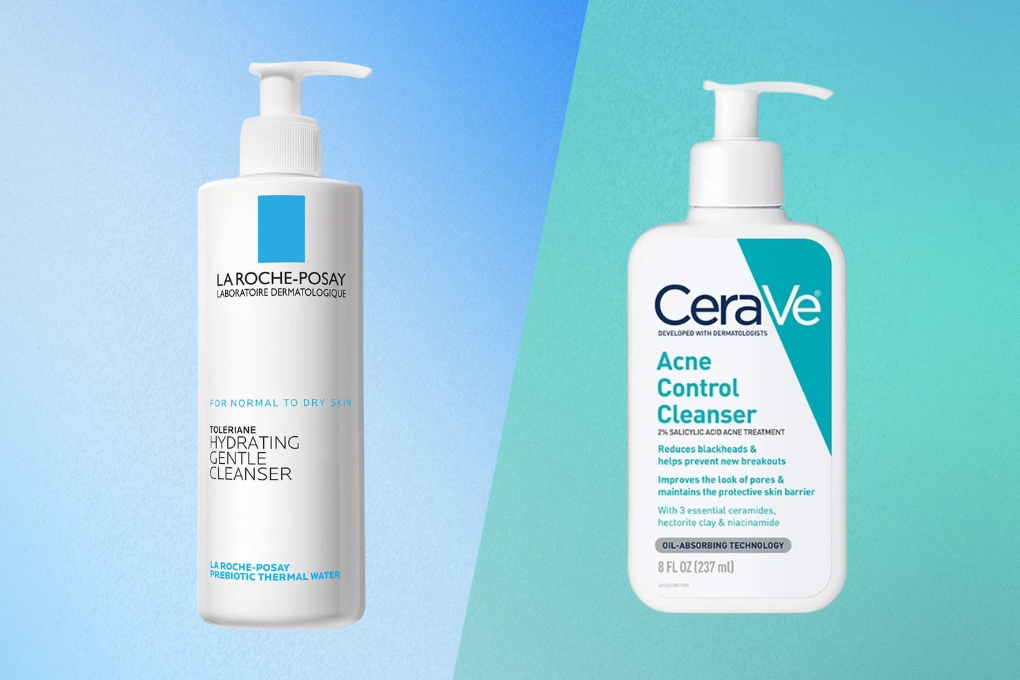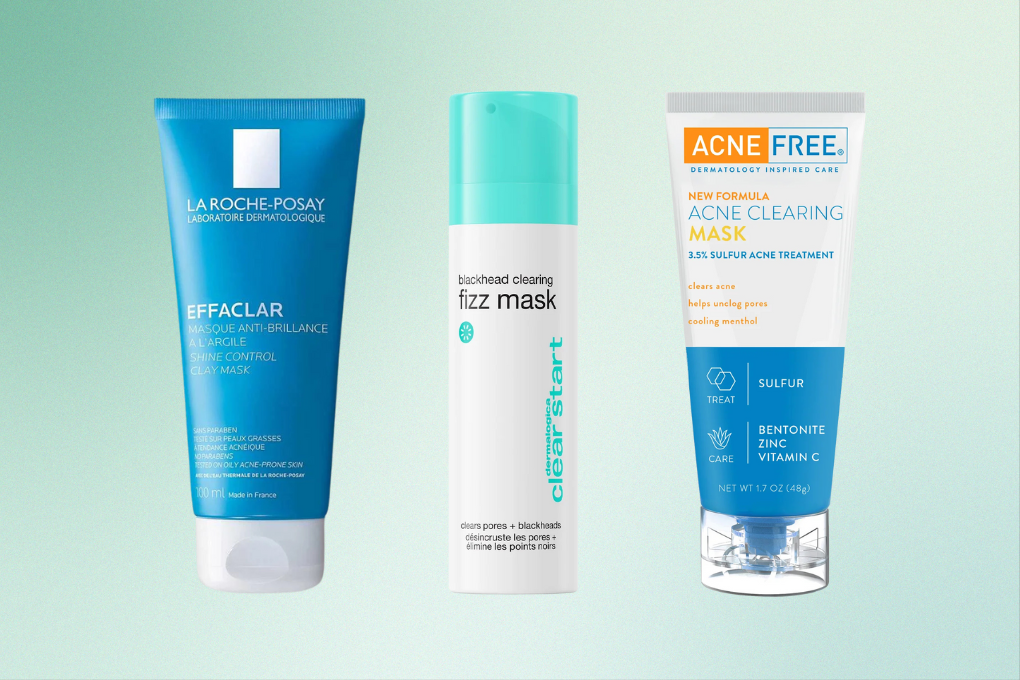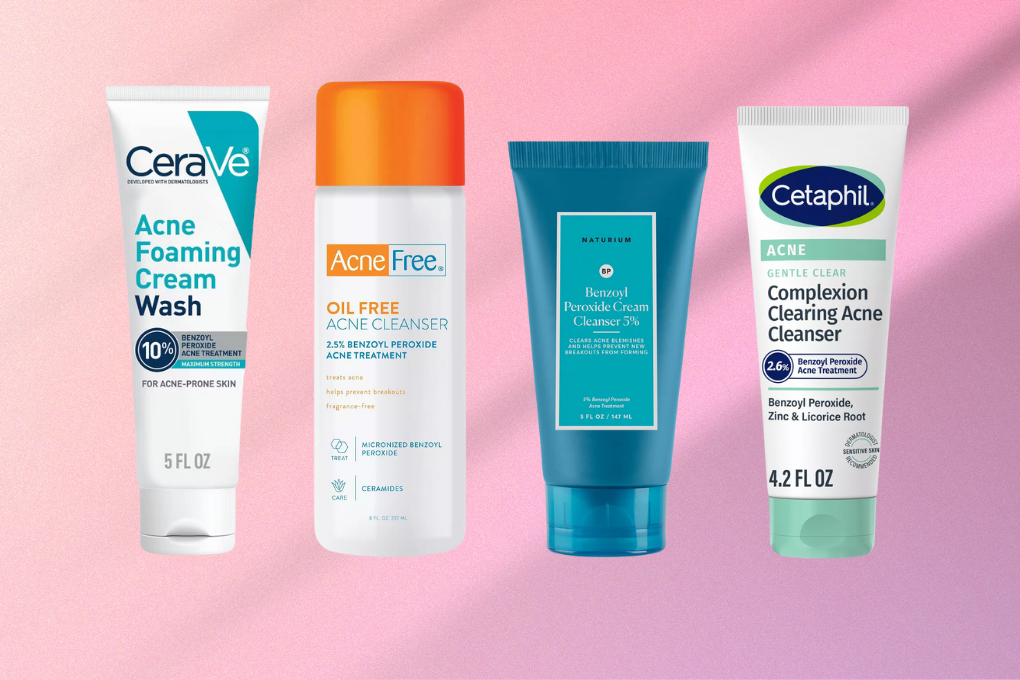Hormonal acne may remind you of the pimples you experienced during puberty, but hormonal acne can unfortunately continue well beyond your teenage years. It often appears in adult women as persistent pimples on the chin or jawline.
If you are experiencing hormonal acne, you are not alone. While it can be difficult to manage, learning more about its causes and treatment options can help you gain control over hormonal breakouts.
Hormonal Acne Causes
Hormonal acne is one of the most common types of acne to affect adults, particularly women, due to hormonal fluctuations from menstrual cycles, pregnancy, and menopause, as well as certain medical conditions such as polycystic ovary syndrome (PCOS).
When androgens (male hormones present in both men and women) stimulate the sebaceous glands in the skin, they cause them to produce excess oil that can clog pores and lead to acne.
Hormonal changes that can trigger acne include:
Menstrual Cycle
For many of us, a breakout is the first sign that we are about to get our period. Although women produce androgens in smaller amounts than men, during your cycle, there is a rise in androgen levels, particularly in the week leading up to your period. This can cause an increase in oil production and lead to hormonal acne.
In addition to androgens, other hormones such as estrogen and progesterone can also contribute to the development of hormonal acne.
Polycystic Ovary Syndrome (PCOS)
Polycystic ovary syndrome (PCOS) is a hormonal disorder that affects up to 10 percent of women of reproductive age and is characterized by cysts on the ovaries, irregular menstrual cycles, and high levels of androgens.
If you suffer from hormonal acne caused by PCOS, your high levels of androgens can cause your skin’s oil glands to produce more sebum, leading to clogged pores and acne. Women with PCOS may experience acne on the face, chest, and back, and it can be more severe than typical acne.
Oral Birth Control
Some people experience hormonal acne from their birth control pills, while others enjoy clear skin on the pill and only notice that they are getting pimples when they go off of it. This is because the hormones in birth control pills can affect the levels of androgens in the body in different ways, which can impact oil production and contribute to both the development of acne and clearer skin.
Some types of birth control pills that contain progestin, a synthetic form of progesterone, can have androgenic effects and lead to the development of acne in some women. On the other hand, some types of birth control pills that contain a combination of estrogen and progestin can improve acne by reducing androgen levels and decreasing oil production. When you quit hormonal birth control, it can upset your hormonal balance and may cause “post-pill acne.”
Hormonal IUDs
There are two main types of IUDs: hormonal and non-hormonal. The non-hormonal type of IUD (brand name Paraguard) uses copper to prevent pregnancy and does not affect your hormones. However, if you switched from a combination birth control pill, which was suppressing acne, to a non-hormonal IUD, you may experience post-pill acne.
The hormonal type of IUD (brand names Mirena and Skyla) releases a small amount of the hormone progestin to prevent pregnancy. Progestin is a hormone that can increase oil production in the skin, leading to breakouts. This is especially true in people who are already prone to acne.
Menopause
During menopause, there is a significant decline in estrogen levels, which can lead to an increase in androgens relative to estrogen levels. This hormonal imbalance can cause an increase in oil production, which can clog pores and lead to the development of acne.
Menopausal acne typically appears as deep, painful cysts that occur around the chin, jawline, and neck. It can be particularly frustrating for women who have never experienced acne before, or who have not had acne since adolescence.
Pregnancy
Acne during pregnancy is a common condition, affecting up to 50 percent of women. While not all acne during pregnancy is hormonal, hormones like estrogen, progesterone, and androgens can fluctuate significantly during pregnancy, leading to changes in the skin.
When estrogen levels rise during pregnancy, it can improve the appearance of the skin, including reducing acne. However, progesterone levels can also increase during pregnancy, leading to an increase in oil production and potentially causing acne. The treatments for acne during pregnancy are limited due to the risk of birth defects, but you can consult with your doctor to find some options that may be safe for you. Fortunately, hormonal acne during pregnancy should resolve once your hormone levels return to normal after delivery.
Testosterone Treatments
Testosterone treatments are sometimes prescribed to men who have low levels of the hormone, and in some cases, to women with certain medical conditions.
When testosterone levels are increased through treatments, it can lead to an increase in oil production in the skin, which can clog pores and cause acne.
Genetic Causes
As hormonal acne is typically caused by an increase in androgen hormones, such as testosterone, some people may have a genetic predisposition to producing higher levels of androgens, which could increase their likelihood of developing hormonal acne.
Lifestyle Causes
Stress can trigger the release of hormones that can cause the skin to produce more oil. Diet can also play a role in acne development, particularly diets that are high in sugar and refined carbohydrates, which can raise insulin levels.
A hormone that helps regulate blood sugar levels, high levels of insulin can cause an increase in androgen hormones, such as testosterone. This hormonal imbalance can lead to an increase in oil production, which can clog pores and cause acne. In addition to increasing androgen levels, high insulin levels can also lead to inflammation in the body, which can further exacerbate acne.
What Does Hormonal Acne Look Like?
Hormonal acne typically appears as deep, painful cysts and nodules. These types of lesions can be difficult to treat and can cause scarring. Hormonal acne can also cause blackheads and whiteheads, as well as small, inflamed bumps on the skin.
Hormonal acne breakouts tend to occur in the same place on your face over and over again. Hormonal adult acne is usually located in the lower half of the face, including your chin, jawline, cheeks, and neck.
If you often get pimples on your chin and jawline, that could indicate that you might have hormonal acne. Hormonal acne can also sometimes appear on your back, shoulders, and chest.
Hormonal Acne Treatments
Hormonal acne is notoriously challenging to treat, but fortunately, there are many different treatment options to try.
You may have to try a few different treatments or mix and match to find a hormonal acne treatment combination that works for you. If your acne is severe or persistent, be sure to consult with a dermatologist to get medical advice and treatment.
Over-the-Counter Topical Treatments for Hormonal Acne
There are many over-the-counter topical products designed to treat hormonal acne at your local drug store or online. Below are some of the most common and effective options. As with any acne treatment, start slowly before building up strength and frequency.
Benzoyl Peroxide
Benzoyl peroxide can also be commonly found in face washes and leave-on acne treatments. It works by killing the bacteria that cause acne, reducing inflammation, and helping to unclog pores. When benzoyl peroxide is applied to the skin, it penetrates the hair follicles and pores, where it releases oxygen. This oxygen creates an environment that is toxic to the bacteria that cause acne, such as Cutibacterium acnes.
Benzoyl peroxide can be irritating and is known to bleach fabrics. If you are using it as a face wash, you should rinse thoroughly to keep it from bleaching your towels and pillowcases. If you use it as a leave-on treatment, you might want to switch to all white bedding and towels.
La Roche-Posay Effaclar Duo Dual Action Acne Cleanser with 4% Benzoyl Peroxide, LHA, and Niacinamide
- Balanced strength
- Lipo-hydroxy acid to exfoliate
- Niacinamide and thermal water to soothe
- More expensive than other options
- Niacinamide can be irritating for some skin types
Salicylic Acid
Face washes and leave-on products that contain salicylic acid are widely available. Salicylic acid is a type of beta-hydroxy acid (BHA) that works as an exfoliant to unclog pores, reduce inflammation, and prevent acne breakouts. When applied to the skin, salicylic acid penetrates the pores and dissolves the sebum, dead skin cells, and other debris that can clog the hair follicles and lead to acne. However, it may not work for everyone, and some people may experience irritation or dryness when using salicylic acid products.
Paulas Choice Skin Perfecting BHA Liquid Exfoliant with 2% Salicylic Acid
- Optimal pH for acid
- Green tea to soothe and support skin barrier
- Expensive
- Too strong for some skin types
Retinoids
You can find retinoids in the form of retinol and adapalene at 0.1 percent strength over-the-counter as a leave-on treatment. They work by regulating the skin cell turnover rate, reducing inflammation, and preventing the formation of new acne lesions.
When retinoids are applied to the skin, they stimulate the production of new skin cells and promote the shedding of dead skin cells. This process helps to unclog pores and prevent the formation of new acne lesions. Retinoids such as tretinoin (Retin-A) and adapalene are available at prescription strength from your doctor.
La Roche-Posay Effaclar Adapalene Gel 0.1% Treatment
- Maximum over-the-counter strength
- Non-greasy gel-like texture
- HSA and FSA eligible
- Expensive
Azelaic Acid
Although less common in drugstore acne products, azelaic acid is a medication that can be used to reduce inflammation and unclog pores. It also has antibacterial properties that can help kill acne-causing bacteria. It may be particularly effective for treating post-inflammatory hyperpigmentation, which is a common complication of hormonal acne.
Proactiv Clean Azelaic Pore Perfector Cream Serum with 5% Azelaic Acid
- Lotion-like serum texture
- Squalane, bisabolol, and allantonin soothe and moisturize
- 5% azelaic acid gently clears pores
- May not be strong enough for some people
Medical Treatments for Hormonal Acne
If it is at all available to you, consult with a doctor to receive medical treatment for hormonal acne. Hormonal acne is difficult to treat and usually needs more than topical treatment to have an effect. A medical provider can help diagnose the root causes of your hormonal acne and prescribe the appropriate treatment.
Multiple treatments might be prescribed to effectively target the hormonal imbalance and clear the skin, and can include the following:
Combined Oral Contraceptives
Birth control pills that contain both estrogen and progestin can help to regulate hormonal fluctuations that contribute to hormonal acne. They work by suppressing the production of androgens, which can reduce sebum production and acne. However, they may not be suitable for all women and can have potential side effects.
Spironolactone
Spironolactone is a popular and effective treatment for hormonal acne in women. It works by reducing the effects of androgens on the skin, which can lead to a decrease in sebum production and breakouts. It can have some side effects, such as dizziness, fatigue, needing to pee more often, and breast tenderness. As long as you don’t get pregnant, you can stay on spironolactone long term.
Oral Antibiotics
Antibiotics can be used to reduce inflammation and kill bacteria that contribute to acne. They are typically used in combination with other treatments, such as topical retinoids or benzoyl peroxide, and are typically prescribed for a limited period to avoid the development of antibiotic resistance.
Isotretinoin
Also known as Accutane, this medication is a powerful oral retinoid that is used to treat severe acne that has not responded to other treatments. It works by reducing sebum production, shrinking sebaceous glands, and preventing the formation of new acne lesions. However, it can have potential side effects, such as dry skin, chapped lips, and depression, and hormonal acne can sometimes recur after treatment.
Topical Prescription Treatments
In addition to the over-the-counter topical acne treatments listed above, a doctor can also prescribe stronger topical treatments tailored to help clear your specific skin issues. Prescription-strength retinoids like tretinoin (Retin-A), adapalene at 0.3 percent (Differin), and tazarotene (Tazorac) can help unclog pores and reduce inflammation and are commonly prescribed. Topical antibiotics, prescription-strength azelaic acid, and combination treatments are also available from medical providers.
A new type of prescription topical medication to treat acne was approved by the Food and Drug Administration (FDA) in 2020. Clascoterone (Winlevi) is a topical androgen receptor inhibitor that works by blocking the effects of androgens on the sebaceous glands in the skin to help reduce the production of oil and improve acne. Unlike other spironolactone and birth control that target hormonal acne for women, topical clascoterone is also approved for men.
Skin Care Routine for Hormonal Acne
In addition to finding a treatment that helps clear your hormonal acne, you should make sure that any other skin care products you are using help support your skin and don’t clog your pores. Avoid using acne treatments in too many products, as this can be irritating. If you are using a prescription treatment, use a gentle cleanser to fully remove makeup and sunscreen, and follow with a non-comedogenic moisturizer. Harsh products can irritate the skin and worsen your acne by damaging the skin barrier.
Bioderma Sensibio Soothing Micellar Cleansing and Makeup Removing Foaming Gel for Sensitive Skin
- Micelles gently cleanse and remove makeup
- Non-stripping for sensitive skin
- D.A.F. complex to increase skin tolerance
- More expensive than other options
EltaMD Skin Recovery Lightweight Moisturizer for Damaged Skin Barrier with Amino Acids
- Lightweight with hydrating ingredients
- AAComplex restores skin barrier
- Great option when using harsh acne treatments
- Expensive
Finding a broad-spectrum sunscreen that works for your skin is important for hormonal acne because many acne treatments make skin more sensitive to sun exposure. Hormonal acne can also cause hyperpigmentation spots as it heals, and sun protection can help lighten these spots over time.
La Roche-Posay Anthelios Light Fluid Face Sunscreen Broad Spectrum SPF 60
- Lightweight and fast-absorbing
- Water-resistant for 80 minutes
- Antioxidant protection
- Alcohol may be irritating for some skin types
Take a look at other aspects of your daily routine to see if there is anything that might be exacerbating your acne. Try changing your pillowcases more often, as clean pillowcases can help prevent acne by reducing the amount of oil, dirt, and bacteria that can accumulate on your skin while you sleep. Hair care products can contain ingredients that clog your pores, so keep them away from your skin and use a different towel to dry your face than the one you use on your hair.
Work on keeping your hands off your face, as this can spread dirt and bacteria to your skin. And, as tempting as it may be, don’t pop your pimples! Popping your pimples can delay healing and cause scarring. Instead, use a hydrocolloid pimple patch to create a protective environment that helps to draw out the fluid and pus from the pimple while preventing further infection and inflammation.
Diet and Lifestyle for Hormonal Acne
While many factors can play a role in the development of hormonal acne, diet and lifestyle changes can help manage the condition in addition to treatment:
- Eat a balanced diet: Eating a balanced diet that is rich in whole foods such as fruits, vegetables, whole grains, protein, and healthy fats can help support overall skin health and reduce inflammation.
- Avoid sugary and processed foods: High-sugar and processed foods can cause spikes in insulin levels, which can lead to increased sebum production and inflammation, contributing to acne. Try eating more foods lower on the glycemic index.
- Incorporate anti-inflammatory foods: Eating foods that are high in antioxidants and anti-inflammatory compounds such as omega-3 fatty acids, vitamin C, and zinc can help reduce inflammation and support skin health. Examples include fatty fish, nuts and seeds, berries, and leafy greens.
- Manage stress: Stress can trigger hormonal changes that contribute to acne, so finding ways to manage stress such as therapy, meditation, yoga, or exercise can be helpful.
- Get enough sleep: Adequate sleep is important for hormone regulation and overall health, so aim for 7-8 hours of quality sleep each night. Try to create a relaxing bedtime routine and stick to the same schedule every night.
Scarring from Hormonal Acne
Hormonal acne can often create deep cysts under the skin that can put you at risk for scarring. Unlike post-inflammatory hyperpigmentation, which will slowly fade over time, acne scars are permanent marks or indentations on the skin that are left behind after acne has healed. Acne scars are usually caused by the inflammation that occurs when acne lesions penetrate deep into the skin and damage the tissues beneath. The body’s natural healing response to this damage can lead to the formation of scars.
It is first important to prevent scarring by seeing a dermatologist for medical advice and treatment for acne. Once scarring has happened, there are several treatment options available from dermatologists to help reduce the appearance of acne scars if they bother you, including laser therapy, chemical peels, and microneedling.
Hormonal acne can be frustrating to manage, but with the right treatment and lifestyle changes, it can be controlled.
If you suspect that you may have hormonal acne, it is important to seek medical advice and work with a dermatologist to develop an acne treatment plan that is tailored to your specific needs. By taking a proactive approach to handling hormonal acne, you can develop a better understanding of what your skin and body needs and minimize its impact on your life. Remember to be gentle with your skin and stay patient by giving your treatment a chance to work. Good luck!














